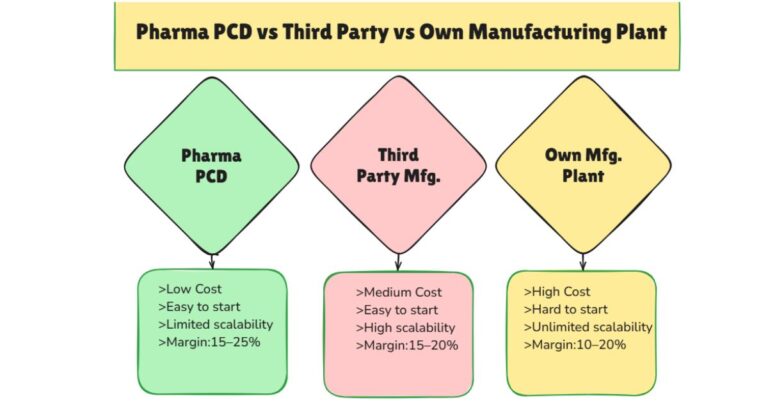High-Performance Liquid Chromatography (HPLC) is a widely accepted technique for separating multiple substances in a single test. HPLC analysis is utilized to determine the assay of raw materials or finished products. This technique is also suitable for identification tests, comparing samples to a known reference standard. During the identification process, various factors such as retention time (Tr), peak area, and peak shape can be analyzed. Consequently, HPLC is a key instrument in modern pharmaceutical laboratories. The principle of HPLC is understood through its complete instrumentation.

Principle of HPLC
The principle of HPLC involves the separation of substances using a mobile phase and a stationary phase packed within a column. This technique allows for both qualitative and quantitative analysis.
During analysis, the substance is dissolved in a mobile phase, typically water, acetone, or an alcohol-based solution. The prepared analyte is then injected into the system and passes through the column, where separation occurs. Subsequently, the separated analytes are detected by an associated UV-Vis detector, which records the time and quantity of each substance. The detector transmits this information to a computer system, which converts it into statistical data. These values are then calculated to determine the assay of the substance.
Role of HPLC Column
The column is a crucial component of the HPLC system, with its quality and efficiency directly determining the analytical results. The entire separation process takes place within the column as the analyte passes through it under high pressure, leading to compound separation.
Various column parameters influence the retention time, separation, and accuracy of the analysis. The column’s packing ensures the separation of specific substances, as not every molecule can be separated by any column. Furthermore, the length and diameter of a column impact the molecule’s retention time.
Different types of columns are employed for various applications. Several significant terms play a role in chromatographic systems, including normal phase, reversed phase, size exclusion, ion exchange, affinity, and hydrophilic interaction.
Interactive Infographic on HPLC instrumentation
🧪 HPLC Principle
High-Performance Liquid Chromatography Interactive Guide
HPLC analysis is utilized to determine the assay of raw materials or finished products, making it suitable for identification tests by comparing samples to known reference standards.
Dissolve in mobile phase
Into HPLC system
Mobile & stationary phase
UV-Vis detector
Computer processing
Crucial component where separation occurs. Quality and efficiency directly determine analytical results.
Registers time and amount of analyte. UV-Vis detectors are commonly used in pharmaceutical industry.
Provides stable, uniform pressure throughout the system. Reciprocating pumps are widely utilized.
Introduces sample into system via syringe or automated autosamplers in industrial settings.
Removes dissolved gases from mobile phase to prevent analytical errors and baseline turbulence.
Polar stationary phase
Non-polar stationary phase
Charged separations
Molecular size separation
Duration between sample injection and analyte detection – unique fingerprint for each compound.
Measured from baseline rise through formation to baseline return.
T = b/a (should not exceed 2% of total chromatogram) – measures peak asymmetry.
Time required to bring analyte from injection to detector.
Uses constant mobile phase composition throughout the analysis.
Allows simultaneous use of multiple mobile phases with variable composition during run.
Also Read: Pharmaceutical formulation plant for sale in North India
Types of columns:
In pharmaceutical laboratories, numerous types of columns are utilized, with the selection depending on the molecule being tested and the specific requirements of the analysis. There are four main types of columns:
- Normal Phase Columns
- Reverse Phase Columns
- Ion Exchange Columns
- Size Exclusion Columns
Detector:
The detector’s function is to register the time and amount of analyte in the form of an area. The changes perceived by the detector are converted into electronic signals, which are then processed by an associated personal computer. Typically, UV-Vis detectors are employed in HPLC systems within the pharmaceutical industry.
Gradient or Isocratic HPLC system:
In the pharmaceutical industry, two main types of HPLC systems are used: Isocratic and Gradient (also known as a Binary system). The primary distinction between these lies in how the mobile phase is supplied. An isocratic system utilizes a constant mobile phase composition, while a gradient system allows for the simultaneous use of more than one mobile phase, with the facility to change their composition during the run. The pressure of these different mobile phases can be varied as needed for the specific analytical conditions.
Chromatographic Parameters.:
The analyte, separated by the column with the help of the mobile phase, is recorded by the detector as signal peaks. The total area, or the amount, of these peaks is known as a chromatogram. Each peak provides both qualitative and quantitative data about the analyte. Specifically, the area of a peak represents the assay or concentration of an analyte within the mixture. A few more technical terms are important in chromatography.
Delay time:
The time required to bring the analyte compound from injection to the detector is called the delay time.
Retention Time:
Retention time refers to the duration between the instant of sample injection and the detection of the analyte, essentially encompassing the entire time of peak formation. The retention time for any given analyte is distinctly imprinted on its corresponding peak graph.
Peak Width:
Peak width is measured from the point where the peak rises from the baseline, through its formation, until it returns to the baseline again.
Tailing factor:
The tailing factor quantifies the degree of peak asymmetry. It is defined as T=b/a, where ‘a’ represents the width of the front half of the peak and ‘b’ represents the width of the back half of the peak. All these values are measured at 10% of the peak height. Generally, the tailing factor should not exceed 2% of the substance’s total chromatogram.
The Pump:
The pump is an integral part of the HPLC system, responsible for flowing the mobile phase through the column and the entire system. It provides stable and uniform pressure throughout the whole process, which can be adjusted as per the requirements. In liquid chromatography systems, reciprocating pumps are widely utilized.
Injector:
The injector is typically positioned after the pump. The eluent is introduced into the system either conventionally via a syringe or, in modern industrial settings, by automated autosamplers.
Degasser:
A degasser is used to remove dissolved gases, or invisible air bubbles, from the mobile phase and eluent solutions. These small bubbles can negatively affect the analytical results. To prevent such errors, a degasser is employed. Mobile phases containing air bubbles can also cause turbulence in the baseline.
Advantages of HPLC:
- Speed of testing
- Efficiency of the test
- Accuracy of the test
- Acceptability
- Repeatability.
Summary:
Liquid chromatography is a vast subject that extends far beyond just the principle of HPLC. The complete instrumentation of HPLC operates on its own set of working principles and standards. HPLC stands as the most trusted modern-day analytical method. With the increasing burden of audits and the need to meet the compliances of various validation plans, HPLC has become an indispensable instrument for every pharmaceutical laboratory. Furthermore, liquid chromatography is a requirement across all pharmacopeial standards; individual monographs demand HPLC testing for every raw material and dosage form. HPLC testing surpasses traditional chemical analysis methods due to its multi-dimensional identification capabilities for substances. As a highly sophisticated instrument, HPLC demands a high level of alertness during test performance. Regular calibration of the HPLC system is also crucial.
Related Posts:
- Pharma units for sale in Baddi!
- Pharma plant required area according to Schedule-M
- Small Pharma unit for sale in Uttarakhand
- Latest NPPA list 2022| Latest DPCO list 2022


